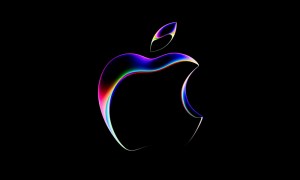
During the WWDC 2021 keynote, Apple announced its next version of MacOS. Known as Monterey, this year’s MacOS desktop operating system is now available for everyone to download, if you’re daring enough to be one of Apple’s beta testers.
Though Apple has not given a specific release date for the official release of MacOS Monterey — the Cupertino, California, tech giant vaguely mentioned that the software will be available this fall — you can get your hands on and try out MacOS Monterey through a public beta program. MacOS Monterey, which jumps to version number 12 this year following the release of MacOS 11 Big Sur, was previously available as a closed developer beta earlier this summer following Apple’s WWDC keynote, but it is now open to anyone who is interested in trying out the public beta.

If you’re among the brave, we’ll show you how to install and run MacOS Monterey today on your Mac.
To get started with the download, you’ll want to:
- Back up your Mac. As with all beta software, things can go wrong, and you may need to either restore or wipe your Mac’s storage clean. In this unfortunate instance, you’ll want to have all your important files, photos, videos, and music backed up either to local storage using an external drive or to a cloud storage service, like Apple’s iCloud, Google’s Drive, Dropbox, Box, or Microsoft’s OneDrive.
- Register your Mac to be part of Apple’s public beta program. Unlike the previous release of the developer beta, the public beta is free and doesn’t require a $99 subscription fee to Apple’s developer program. All you have to do is go to the Apple beta portal, sign in with your Apple ID, and enroll your Mac to join the public beta. If you don’t have an Apple ID, you’ll need to sign up for a free Apple ID at this point.
- Download and install the MacOS Public Beta Utility. Apple will prompt you to download the MacOS Beta utility and run it. Follow the on-screen wizard to get your Mac ready to download and install Monterey. You may be prompted to restart your computer after the utility finishes installing.
- Download and run MacOS 12 Beta. To do this, click on the Apple menu at the top and navigate to About Mac. Then click on Software Update and follow the on-screen wizard to download the MacOS 12 Beta. The download process will take some time to complete and install.
Once the beta operating system is downloaded, you’ll be asked to restart your Mac to apply the update, and you’re off to journey in the OS that’s named after California’s coastal seaside.
What’s new with MacOS Monterey?
Apple announced a number of new features for Monterey this year, including an updated version of Safari, more privacy controls, a new Quick Note, improved notifications, Focus settings, and updates to Messages and FaceTime. For users who have bought into the Apple hardware ecosystem, Universal Control allows you to use your keyboard, mouse, and trackpad on your Mac to control your iPad. Unfortunately, Universal Control and some of the other features don’t appear to be included in this version of Monterey just yet.
To get the most out of Monterey, be sure to see our coverage of the best features of Apple’s new operating system.
Despite the rewards of being among the first to experience Apple’s latest software, the beta program — whether it’s Apple’s public or developer beta — comes with a number of risks. Primarily, there could still be lingering bugs, and the beta OS may break compatibility with existing apps and software you’re currently using. Data loss could also be an unfortunate reality, so be sure to back up all your files. Apple recommends that you do not install beta software on primary devices or mission-critical systems.
And if you encounter any bugs or glitches, Apple also recommends you file bug reports and provide feedback to improve software development ahead of MacOS 12’s public release this fall.
Apple also released iOS 15 beta, iPadOS 15 beta, and WatchOS 8 beta.


